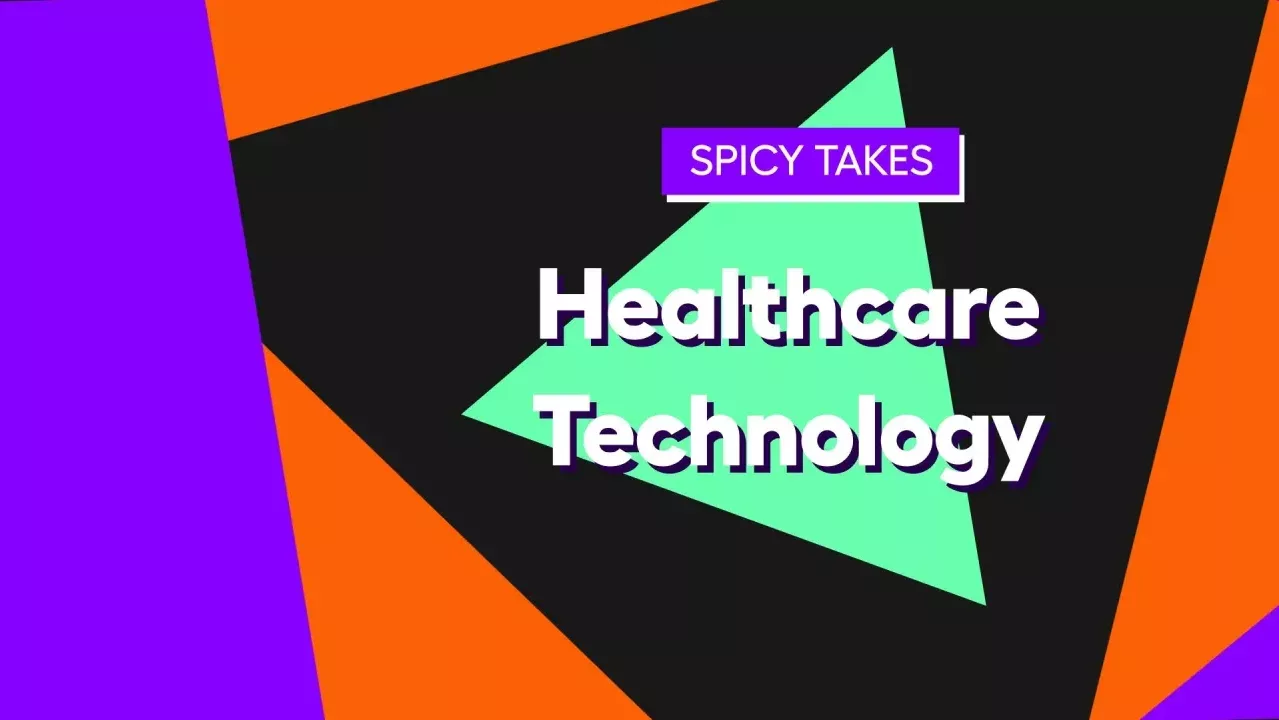3 ways technology has evolved healthcare
From paper charts to electronic health records (EHR) systems and patients who have more access to medical information and are more tech savvy than ever, healthcare isn’t what it used to be — is that a good thing? Arcadia CEO Michael Meucci discussed the significant changes that have occurred in healthcare over the past 10 years with Nick Stepro, Chief Product and Technology Office at Arcadia, and Dr. Kate Behan, Chief Medical Officer at Arcadia. The trio weighed the benefits with the repercussions of technology in healthcare and predicted what’s ahead in the next six to 18 months.
The full discussion is available on Spicy Takes, Episode 1. Below we summarize three areas of change and their impacts on the industry.
1. Broad adoption of EHR systems
“One of the biggest changes is the adoption of the EHR and all it has brought with it — good and bad.” —Dr. Kate Behan.
In 2011, 20% of hospitals had adopted EHR. Today, 95% of hospitals and 78% of physicians have adopted EHR. Dr. Behan thinks that one of the really powerful things about EHR is that it enables a 360° view of the patients — what used to take days is now at your fingertips. On the downside, EHRs have contributed to provider burnout. In some cases, up to 40% of someone’s day is spent on data entry.
Stepro says moving to EHRs was like a “lift and shift” where the industry took what it was doing on paper and digitized it. Transitioning this way means the industry missed the opportunity to reimagine what software actually should do at the point of care to evolve to be more patient-centered.
Payment reform could prove to be a second chance to get it right and create a system that is patient-centered.
2. The pandemic made digital technology tools everyday necessities
“A big part of the solve here is using AI and automation to create an abstraction layer on top of these systems to enable people to have meaningful conversations and automate billing and transaction management to give clinicians their life back.” —Nick Stepro
The COVID-19 pandemic greatly accelerated technology use for everyone, increasing comfort with digital patient experiences across the board. But a lot of the digital experiences we’ve become accustomed to were quick-fix, short term solutions that have contributed to staffing and budget issues at many health systems.
The question is how to harness the power of this transformation to drive patient satisfaction long term.
One possible next step would be to optimize the technology that we already have in place, giving people on the front lines more power to interact with it and maximize what they do before layering on more technology.
Another solution is to tackle the problem of data entry that contributes to burnout with AI and automation to enable people to have meaningful conversations and automate the billing management.
3. Patients’ unlocked immediate access to medical information
“We’re at a confluence moment. You have physician burnout, physician shortage across primary care and specialty care, and a consumer focused patient cohort that is used to using technology.” —Michael Meucci.
The idea of a provider as a gatekeeper has been eliminated and patients now have access to medical information, such as lab results, instantly, instead of waiting for their provider to translate the results to them as they would have a decade ago. They demand answers quicker and take it upon themselves to find answers quicker than before. This dynamic has led to both patient empowerment and pitfalls of misinformation.
Maintaining strong patient-provider relationships in this reality requires much more communication between patients and providers, but that communication is funneling through the same systems of 20 years ago. This old system is not prepared to handle the load and is another contributor to provider burnout.
Additionally, while more information and communication has positives — more educated consumers, better engagement with patients, and shared decision making which leads to better patient relationships and better outcomes — it also has the potential to go too far. Looking things up on Google or other sources with accurate information can create unnecessary worry about lab results. In recent years, it’s proven very difficult for providers to course correct someone who has consumed misinformation.
Keeping up with the pace of change
Overall, the advances in healthcare technology open up many opportunities for better outcomes in the future. However, the industry faces tough questions on how to best apply technology in the months and years ahead to really drive patient satisfaction. A trusted partner can help organizations implement a strategy for technology adoption that supports a strong patient experience and enhances providers’ quality of life.
Watch the full discussion on Spicy Takes Episode 1 or request a demo to learn how we can put your technology and data to work, together.

